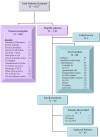Implementation of a stroke self-management program: A randomized controlled pilot study of veterans with stroke
- PMID: 24073080
- PMCID: PMC3717676
- DOI: 10.1007/s13142-011-0070-y
Implementation of a stroke self-management program: A randomized controlled pilot study of veterans with stroke
Abstract
Secondary stroke prevention is championed as guideline care; yet there are no systematic programs offered. We developed a stroke self-management program to address this gap and pilot test the program. We conducted a randomized controlled trial at two Veterans Administration (VA) hospital sites where we recruited patients with an acute stroke to receive either the stroke program or an attention-control protocol over a 12-week period following hospital discharge. The stroke program included six sessions that facilitated stroke self management focusing on increasing self-efficacy to recover from stroke and engage in secondary stroke risk factor management. We surveyed outcomes at baseline, 3 and 6 months. We conducted an intention to treat analysis comparing the intervention to the control group on changes of outcomes between baseline and follow-up modeled by a linear model with fixed effects for treatment, visit, and the treatment by visit interaction adjusting for baseline. We recruited 63 participants (33 control and 30 intervention) who were hospitalized with a primary diagnosis of ischemic stroke. We found trends in differences between groups on self-efficacy to communicate with physicians, weekly minutes spent in aerobic exercise, and on dimensions of stroke-specific quality of life. This pilot study demonstrated the feasibility of delivering a stroke self-management program to recent stroke survivors in a healthcare organization. The program also demonstrated improvements in patient self-efficacy, self-management behaviors, specific dimensions of stroke-specific quality of life compared to a group that received an attention placebo program.
Keywords: Behavioral interventions; Self-efficacy; Stroke health‐related quality of life.
Figures
References
-
- American Heart Association. (2011). American Heart Association. Heart Disease and Stroke Statistics — 2011 Update. - PubMed
-
- NHLBI Death Rates for Cerebrovascular Diseases, by Sex, Race, Hispanic Origin, and Age: United States, Selected years 1950–2004 (16894). Centers for Disease Control and Prevention (CDC) National Center for Health Statistics 2006. Available at: http://www.cdc.gov/nchs/data/hus/hus06.pdf#page222.
-
- Wolf PA, Clagett GP, Easton JD, et al. Preventing ischemic stroke in patients with prior stroke and transient ischemic attack: a statement for healthcare professionals from the Stroke Council of the American Heart Association. Stroke. 1999;30(9):1991–1994. doi: 10.1161/01.STR.30.9.1991. - DOI - PubMed
LinkOut - more resources
Full Text Sources
Miscellaneous





